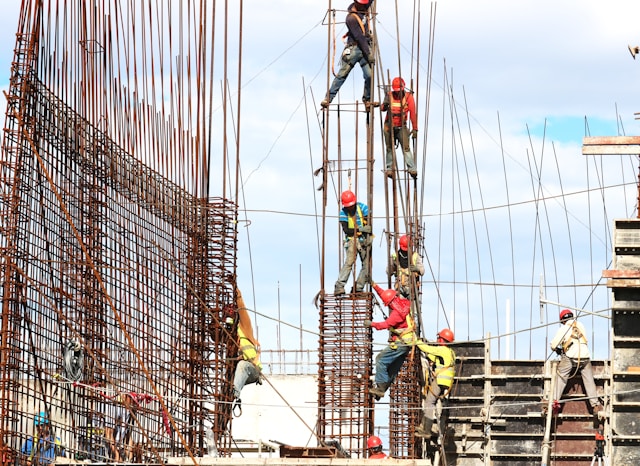 Developing a comprehensive security plan for a construction site is crucial to safeguarding assets, ensuring worker safety, and maintaining project timelines. With the pervasive threat of theft, vandalism, and unauthorized access, construction site managers must implement strategic measures to mitigate risks.
Developing a comprehensive security plan for a construction site is crucial to safeguarding assets, ensuring worker safety, and maintaining project timelines. With the pervasive threat of theft, vandalism, and unauthorized access, construction site managers must implement strategic measures to mitigate risks.
This guide outlines essential steps to create an effective construction site security plan, tailored to the unique needs of each project.
Conduct a Thorough Risk Assessment
The foundation of any robust security plan begins with a detailed risk assessment. Identifying potential vulnerabilities and threats specific to your construction site is essential. Consider factors such as site location, the value of materials and equipment, and previous incidents of theft or vandalism. This initial assessment will guide the selection of security measures and personnel deployment.
Implement Physical Security Measures
Effective physical barriers are the first line of defense against unauthorized entry. Fencing, gates, and secure storage for tools and materials significantly reduce the risk of theft. Additionally, strategic lighting can deter potential intruders by eliminating dark areas where they might hide. Signage indicating the presence of security measures also serves as a deterrent.
Utilize Surveillance Technology
Advancements in surveillance technology offer construction sites an array of options for monitoring activities around the clock. Temporary video surveillance units (CVUs) equipped with motion sensors and night vision capabilities can be rapidly deployed to cover strategic areas. These systems not only deter criminal activity but also provide valuable evidence in the event of an incident.
Deploy Trained Security Personnel
Certified security officers play a pivotal role in construction site security. Their presence acts as a visible deterrent to potential criminals and provides a rapid response to any security breaches. Officers should be trained in emergency response, conflict resolution, and the specific security needs of construction sites. Deploying both uniformed and plainclothes officers can maximize the effectiveness of your security strategy.
Establish Access Control
Controlling access to the construction site is critical for maintaining security. Implementing check-in procedures for workers, visitors, and delivery personnel helps to track who is on site at any given time. Access control systems can range from manual sign-in sheets to electronic badge systems, depending on the size and complexity of the project.
Regularly Review and Adapt Security Measures
As construction projects progress, their security needs can change. Regularly reviewing and adjusting your security plan in response to new risks or changes in the project scope ensures ongoing protection. This adaptive approach allows you to address vulnerabilities promptly and maintain a secure environment throughout the construction process.
Collaborate with Local Law Enforcement
Establishing a relationship with local law enforcement agencies can enhance your construction site security. Informing them about your project and its security measures can facilitate a quicker response in the event of an incident. Additionally, law enforcement can provide valuable insights into local criminal activity trends and prevention strategies.
In conclusion, developing a construction site security plan requires a multifaceted approach that combines physical security measures, technology, trained personnel, and strategic planning. By assessing risks, implementing effective security measures, and continuously adapting to changing conditions, construction site managers can protect their assets, ensure worker safety, and maintain project timelines. Collaboration with security professionals and local law enforcement further strengthens the security framework, creating a safer construction environment.


